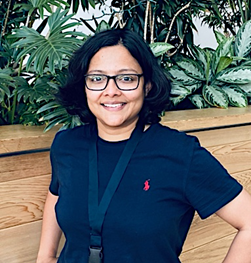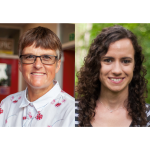Thiya Mukherjee: Plant Physiology First Author

 Thiya Mukherjee, co-first author of “The START domain mediates Arabidopsis GLABRA2 dimerization and turnover independently of homeodomain DNA binding”
Thiya Mukherjee, co-first author of “The START domain mediates Arabidopsis GLABRA2 dimerization and turnover independently of homeodomain DNA binding”
Current Position: Research Scientist, in Douglas Allen lab at the Donald Danforth Plant Science Center, Saint Louis, MO, USA
Education: PhD from Texas Tech University, TX, USA
Non-scientific Interests: Table Tennis and Badminton
Brief-bio: I am a plant scientist by profession and by name (Thiya from Thea sinensis). As a biochemist, my long-term research interest has been to develop a comprehensive understanding of how cellular biochemistry beautifully amalgamates with the underlying genetic regulations. As an undergraduate and master’s student, I attained a fundamental understanding of the plant biology in general. As a doctoral student in the lab of Dr. Scott Holaday at the Texas Tech University, I investigated the role of a key carbohydrate metabolism enzyme fructokinase, an essential enzyme of the cellulose biosynthesis pathway and led new strategies to improve cotton productivity in semi-arid environments. In his lab, I was first introduced to the beautiful amalgamation of biochemistry to developmental biology. With the enthusiasm of learning more, I joined the lab of Dr. Kathrin Schrick at Kansas State University, where I learned about lipids and their roles in regulating transcription factor activity and thus epidermal cell differentiation. This paper is a product of my postdoctoral work in the Schrick lab. Here I investigated the role of HD-Zip IV transcription factors in epidermal-cell differentiation in a DNA-binding Homeodomain (HD) and the lipid binding Steroidogenic Acute Regulatory (StAR)-related lipid Transfer (START) domain dependent manner. Our study advances the mechanistic understanding of these multidomain transcription factors by illustrating the role of HD in DNA binding and START in protein dimerization and turn-over. In my current position, I am extending my understanding of plant development at the metabolite level using soybean seed as a model system. As an international woman in Science, I hope to reach out to people, effectively communicate the cutting-edge research in the field of plant developmental biology and metabolism and motivate them to participate in the same thus, bringing growth and diversity to the plant science world.



